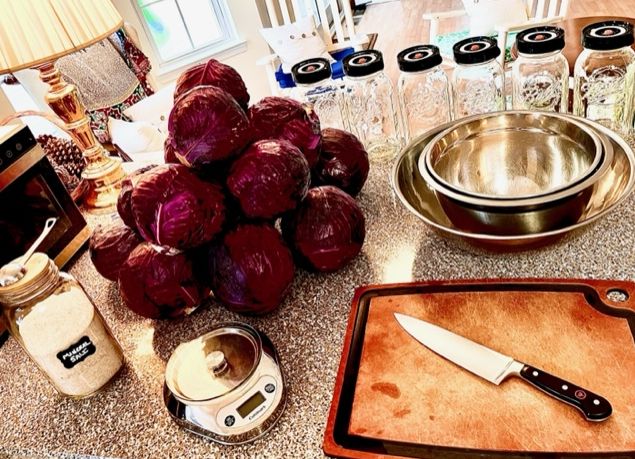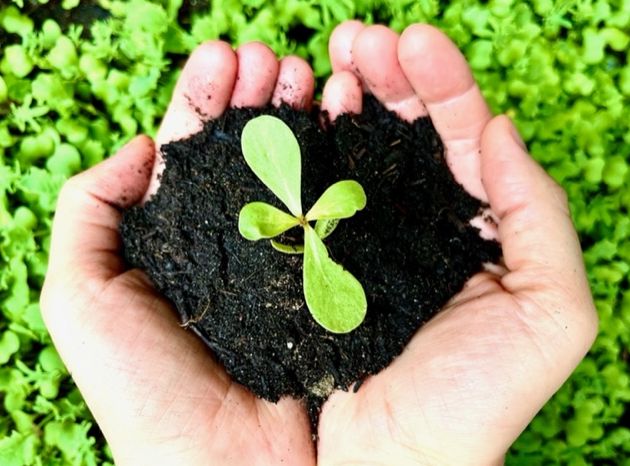Top 5 Kitchen Tools for a Real Food Kitchen
The key to eating real food is to source whole ingredients (whole fruits, vegetables, cuts of meat and seafood, eggs, etc.) and do the processing yourself. This seems more complicated and intimidating than it is. In fact, you only need a few essential kitchen tools to radically change the way you eat.




affiliate disclaimer: This post contains affiliate links. See my full affiliate disclosure for more information.

1. knives
Humans have been using knives for 3.5 million years. Stone and bone blades are one of the first tools that made us human. The oldest knife discovered is the ancient Egyptian Gebel El-Arak Knife, which dates between 3450 and 3200 BC. Knives enable us to access nutrients that are typically protected by skin, hair, rind, and shell.
The modern world of professional knives is overwhelming and intimidating. For 3 years, I made do with basic knives that were cost-effective. I did hours of researching before committing to purchase a set of Wusthof knives for $325. I have never regretted it and never looked back. I use these knives every day, multiple times per day, and they will never need to be replaced. They are a true lifetime purchase.



pros:
- essential kitchen tool
- enables access to protected nutrients
- durable
cons:
- requires caution & experience to use
- need to be stored out of the reach of children
- should be hand-washed and dried
tip:
I recommend investing in a magnetic knife strip that you can place high out of reach of children. I am not a fan of storing knives in drawers or even on countertops. We use this magnetic strip in our home and keep it about 7 feet off the floor.

sourcing:
I purchased my set of Wusthof knives directly from their website for $325. They have a wide variety of knives available, but I recommend doing your research prior to committing to such an established and expensive company. I chose 3 knives of different sizes to accomplish every day kitchen tasks and time-consuming, complicated food processing tasks alike. If you are just beginning to eat a real food diet, I recommend making do with the knives you have, or purchasing something efficient but economical, like this set.
Note: I do NOT recommend ceramic knives; I have broken 3 sets of ceramic knives, which cannot handle hard winter squash or even frozen butter without breaking.

2. cutting boards
It’s tough to cut and process whole foods without cutting boards. For those of you lucky enough to have butcher block countertops, skip this section! For the rest of us, investing in a good set of cutting boards can make cooking so much easier and more pleasurable.
About 10 years ago, I began with the middle-sized Epicurean cutting board in the picture above and eventually invested in an extra-large size and a small size. Our family of 5 uses all three constantly. They are endlessly versatile, and the different sizes adapt flawlessly to different tasks. As a bonus, they are dishwasher-safe.
pros:
- Durable (check out the cut marks in the picture above!)
- Juice wells trap juices
- Dishwasher-safe
- Made in the USA
- Temperature resistant
cons:
- Expensive
- Not solid wood–made from composite paper material



tip:
It’s generally a good idea to purchase a dedicated cutting board for raw meat, especially if you eat a lot of meat that can’t be cut easily in the sink. The boards recommended above are dishwasher-safe and can be run through a sterilizing cycle without issue, but food safety concerns are usually worth the extra expense and mental security.
sourcing:
Epicurean cutting boards can be found on their website or on Amazon. For those seeking a more economical or solid wood set, check out this three-piece set of bamboo cutting boards. Just remember they need to be hand-washed.

3. cast iron pan
This is probably the most versatile kitchen tool in my arsenal. I use it every day, and I never travel without it. You can cook an enormous variety of meals in it, and it is used for nearly every breakfast and dinner in our home. Iron can withstand any cooking or baking heat, and it imparts small amounts of iron (an essential mineral) to the food you consume.
Randomized clinical trials have found that cooking with cast iron cookware can help combat anemia (iron deficiency). This is particularly beneficial for young women and women of childbearing age, as menstruation, pregnancy, and birth can contribute to iron deficits through blood loss.



pros:
- versatile
- stands up to high heat
- helps maintain healthy iron levels
cons:
- heavy (hard to lift with one hand)
- needs to be regularly seasoned

tip:
Unlike aluminum or cookware marketed as “nonstick,” cast iron will not impart toxic chemicals into your food. However, it does need to be regularly seasoned to prevent sticking. There are a plethora of resources online on how to season a cast iron pan; we take the easy way out and cook bacon in it on weekends on very low heat. Unless we’re using the pan for a high-acid or high-liquid dish, we rarely have issues with sticking.
sourcing:
The leader in the cast iron cookware is a company called Lodge. You can find a large variety of cast iron cookware on their website or on Amazon.

4. sheet pan
My cast iron pan is the workhorse of my stovetop; this sheet pan is the workhorse of my oven. I use it for everything from roasting vegetables to making sheet pans of Rosemary & Garlic Beef Jerky and Liver, Heart, & Kidney Breakfast Sausage.
It’s oversized, and you can buy it with the rack which helps with things like rendering duck fat or making Bacon-wrapped Dates stuffed with Chevre. It’s made in the United States by a company called (wait for it) USA Pan. I stumbled across USA Pan when I was looking for non-toxic bakeware and haven’t looked back since.



pros:
- Oversized (20. 75 x 14. 75 x 1 inches)
- Comes with rack (also useful for cooling cookies or curing homemade soap)
- Non-stick silicone coating is made without PTFE or PFOA (carcinogenic chemicals)
- Oven-safe to 450 degrees
cons:
- Both pan and rack should be gently hand-washed and dried
- If it gets scratched, it will need to be replaced

tip:
These pans are made from aluminized steel. Aluminum is a wonderful heat conductor, but it is highly neurotoxic to all life forms. These pans are coated with silicone, which does not leach into food, but if the silicone coating is scratched or damaged, the pans will leach. To avoid scratching the silicone coating, never use steel wool or other high abrasive cleaners. Use only silicone or wooden utensils directly on the surface of the pan.
sourcing:
You can find USA Pan on their website or on Amazon. The extra large sheet pan shown in the pictures above can hold up to 5 lbs of raw meat at a time. Since I’m a big fan of cooking in bulk, I own 2 of these extra large pans, allowing me to process 10 lbs of sausage or jerky in the same day.

5. kitchen scale
It’s one of those items that you don’t use every day, but when you need it, it’s invaluable. A kitchen scale is essential for things like homemade soap and true sourdough bread. I also use it to make Lacto-Fermented Red Sauerkraut, which is a staple in our house.



pros:
- gives you exact measurements
- can alternate between lbs/ounces or grams
- glass top unscrews for easy cleaning
cons:
- turns off automatically after a short period of time

tip:
To prevent me losing my measurements while I’m adding new ingredients to the bowl, I typically just give the bowl a little shake to reset the automatic turn-off timer on the scale. This way, I don’t need to start the measurements over again.
sourcing:
I purchased the scale pictured above from Amazon about 10 years ago, and it still works perfectly for me every time I need it.



Cooking can be as simple as you make it. With a few, versatile tools, especially knives, cutting boards, and a cast iron pan, you can make an almost endless variety of delicious meals from scratch. Simply sautéing fresh vegetables in coconut oil or butter and frying up a pound of ground beef or turkey can make for a healthy, filling, and delicious dinner.
For more inspiration, explore my recipe section here!
take my free 5-day challenge
& instantly access:








